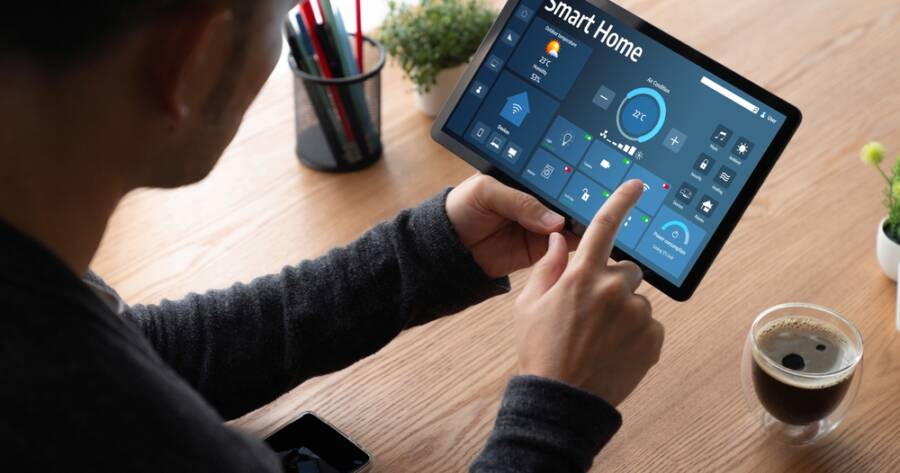Across the United States, more households are turning to smart home technology to manage rising utility costs. Smart devices don’t just add convenience — they help reduce wasted energy, water, and electricity through automation and better control. By choosing a few key upgrades, you can make your home more efficient and comfortable without giving up modern convenience. Understand how leading smart devices can genuinely lower your monthly bills.
1. Smart Thermostats: Automated Comfort and Control
A smart thermostat is one of the most reliable ways to use less energy without noticing a difference in comfort. It adjusts heating and cooling based on your routine, turning down the system when you’re asleep or away. Some models also detect when no one is home and automatically shift to an energy-saving mode.
Unlike a standard thermostat that relies on manual settings, a smart thermostat keeps track of temperature patterns and makes small adjustments for efficiency. Over time, this reduces how often your heating or cooling system runs — especially during hours when you wouldn’t notice the change.
2. Smart Plugs and Power Strips: Cutting Hidden Electricity Use
Many devices keep drawing small amounts of power even when they’re not in use. Smart plugs and power strips help stop that by letting you turn off connected appliances remotely or set schedules for when they should shut off.
For example, a coffee maker, space heater, or television can be set to power down automatically during certain hours. Some smart plugs also include simple tracking features that show which items use the most electricity. Once you see where the waste happens, you can adjust your setup to save more over time.
3. Smart Lighting Systems: Light Only When You Need It
Smart lighting systems combine efficient LED bulbs with timers, sensors, and app-based controls. They let you program lights to turn off when rooms are empty, dim automatically in the evening, or adjust brightness based on natural light.
Even simple changes — like motion-sensing bulbs in hallways or entryways — can help prevent unnecessary use. Over time, smart lighting makes energy savings effortless by aligning with your daily patterns instead of relying on manual switches.
4. Smart Leak Detectors and Sprinkler Controllers: Smarter Water Use
Smart leak detectors are small sensors that can alert you the moment water appears where it shouldn’t — under a sink, near a washing machine, or by a water heater. A quick alert can prevent both wasted water and costly damage.
Smart sprinkler controllers, meanwhile, take the guesswork out of lawn care. They use weather data and soil conditions to water only when necessary, automatically skipping watering on rainy days. These tools don’t just conserve water; they reduce the amount of energy used to pump, heat, and manage it throughout the home.
5. Home Energy Monitors: Seeing Where the Waste Happens
A home energy monitor tracks how much electricity your household uses, often in real time. It helps you see patterns you might not notice — for instance, a refrigerator that cycles more often than it should or a spare appliance left running in the garage.
By revealing these hidden inefficiencies, a monitor makes it easier to target the areas where changes will have the biggest impact. The information can also help guide future purchases, such as choosing appliances that use less energy overall.
6. Smart Window Shades and Fans: Passive Efficiency for Every Season
Smart window shades and ceiling fans are often overlooked, yet they play a major role in maintaining indoor comfort while reducing energy demand. Automated shades can open during cool morning hours to let in natural light and warmth, then close in the afternoon to block heat gain — easing the load on your HVAC system.
Likewise, smart ceiling fans adjust their speed and direction based on room temperature or occupancy, circulating air more effectively and allowing thermostats to stay set a few degrees higher or lower without sacrificing comfort. When combined, these subtle tools create passive energy savings by working with natural light and airflow rather than against them, helping you maintain consistent comfort year-round with less reliance on heating or cooling.
Smarter Tools, Smaller Bills
Making your home more efficient doesn’t require a full remodel or a major investment. Each of these smart devices is designed to save small amounts of energy or water automatically — savings that build up month after month.
When your systems work only as much as they need to, you spend less keeping your home comfortable. Smart upgrades aren’t just about convenience; they’re about regaining control over your household costs, one efficient device at a time.

